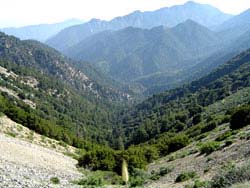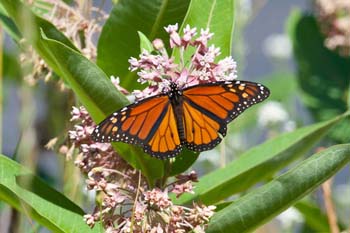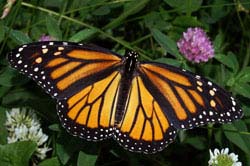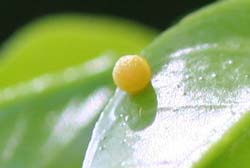
Butterflies are fluttering mosaics. The beauty of each one’s wings comes from thousands of miniscule, overlapping scales in different colors. Yet butterflies bring more than their good looks to gardens; they are an important link in the chain of life. Their larvae are particularly important in feeding other small animals, including hummingbirds.
Salvias and companion plants are another part of this chain of beauty and sustenance. Adult butterflies thrive on the rich nectar of many sages (Salvia spp.). They lay eggs on other favorite host plants, such as Milkweeds (Asclepias spp.), that their baby caterpillars enjoy eating. The presence of butterflies in your garden indicates healthy habitat. In our articles about butterflies and their nighttime relatives, moths, we offer ideas for growing tasty habitat for winged visitors and for creating a mosaic of color in your garden.
Posted: Friday, February 19, 2016
Synopsis:
Wildscaping a butterfly-friendly garden in Southern California is an act of kindness, especially toward imperiled species. Gardeners from Santa Barbara southward may want to group coastal sage and chaparral plants in their butterfly gardens, because those are among favorite sources of nectar for adult butterflies and host plants for caterpillars. Sages are popular nectar choices. Plants, such as Milkweeds and Impatiens, that work well both as nectar providers and caterpillar hosts are important additions.
Read the Article
Posted: Thursday, June 11, 2015
Synopsis:
Flowers by the Sea Farm and Online Plant Nursery is serious about wildlife gardening and grows a number of milkweed species considered among the best for supporting Monarch butterflies. Three of the nursery's toughest, loveliest milkweeds are Indian Milkweed (Asclepias eriocarpa), Showy Milkweed (Asclepias speciosa) and Common Milkweed (Asclepias syriaca). Read about the history of milkweeds and the reasons why Monarch butterflies are threatened due to a shortage of these tough yet lovely plants caused by herbicides. Learn how herbicides and pesticides harm Monarchs and other milkweed-loving pollinators.
Read the Article
Posted: Tuesday, July 2, 2013
Synopsis:
Creating a butterfly garden is like creating a teen-friendly home. You need to offer tasty snacks, healthy beverages, and comfortable accommodations that aren't too tidy. Like the teens that fill your basement and backyard, butterflies will keep coming back if you give them what they need. The variety of plants in your yard is the main reason why butterflies do or don’t visit. Salvias are among the popular plants for adult butterflies that love nectar.
Read the Article
Posted: Wednesday, October 31, 2012
Synopsis:
If you want to invite butterflies to lodge in your backyard overnight or during winter, building pretty butterfly houses won't succeed. They need all kinds of messy hangouts to ride out a rain storm, sleep through the night safely and endure winter in your garden. You can build a butterfly hostel without hammer and nails.
Read the Article




